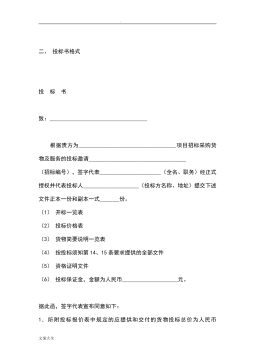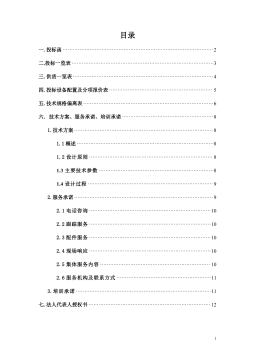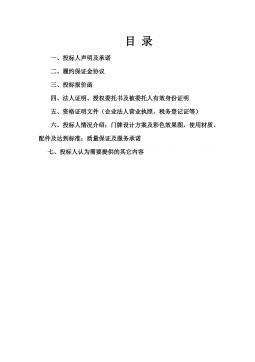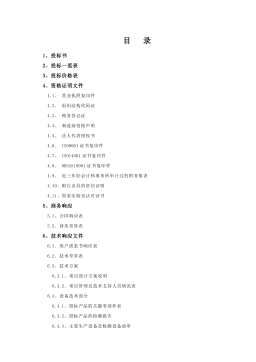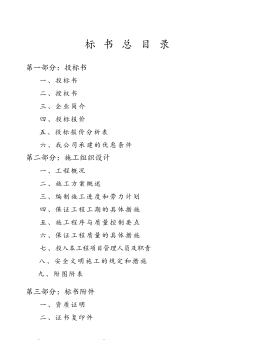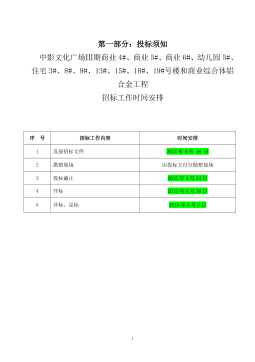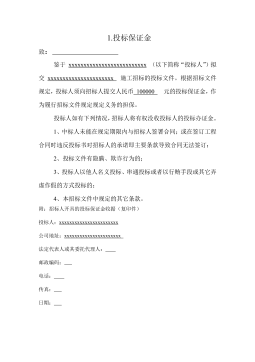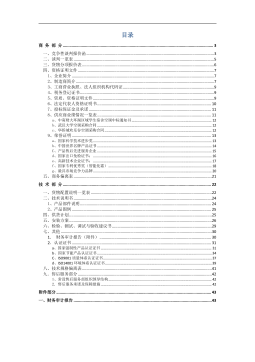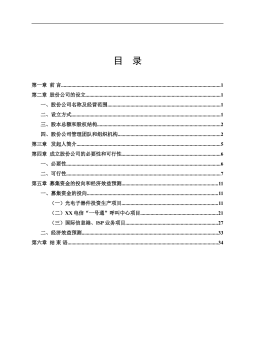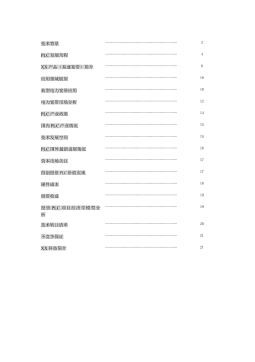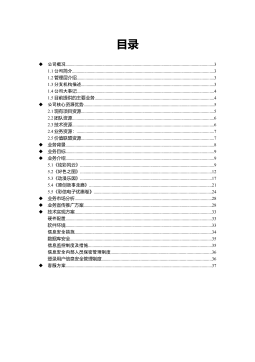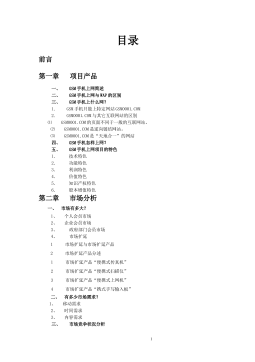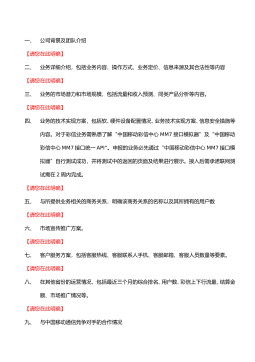转让定价税收竞争研究
VIP免费
硕士学位论文
I
摘要
经济全球化为世界各国带来了机遇和挑战,随着经济全球化进程的加深,转
让定价已成为跨国公司重要的经营环节和实现战略目标的手段。同时各国政府也
越来越加强转让定价反避税的管理,尤其从上世纪 80 年代以来,更多的国家开始
引入转让定价税制并不断地进行修订和完善,同时国际税收竞争也愈演愈烈。而
转让定价税制具有其特殊性,它不仅可以反避税,还影响着国家间税收利益的分
配,以及关系着企业税收负担和各种风险。在此背景下,许多国家不断有目的地
调整和修订转让定价税制,并以转让定价税制为手段参与到国际税收竞争之中,
实现扩大税基,维护税收公平,促进本国跨国公司发展,吸引 FDI 等目标。本文
将具有税收管辖权的国家或地区利用转让定价税制参与税收竞争的行为定义为转
让定价税收竞争,并主要从理论模型和实践两个方面来分析政府如何参与转让定
价税收竞争以及这种竞争的影响。本文正文,除了绪论外共分为 4部分,内容如
下。
本文第 2章从税收竞争概念出发,通过分析转让定价税制对他国税收收入和
政策的影响,引入转让定价税收竞争概念。并对转让定价税收竞争具体手段、目
的和特点进行论述。
本文在第 3章转让定价税收竞争理论分析方面,以完全信息静态博弈分析和
动态博弈分析为基础,假设跨国公司以全球利润最大化为目标,考虑股权比例,
过度调整,相应调整和文件准备等因素,构建模型分析转让定价税制背景下跨国
公司母公司所在国以及关联公司所在国之间的税收利益的竞争。重要结论有:1)
转让定价税制确实会减少其他国家税收收入,无论是否存在相应调整;
2)过度的
转让定价调整会侵蚀其他国家的税收收入,并可能迫使跨国公司选择逆向转让定
价,造成严重的双重征税问题;3)相应调整可以有效减轻双重征税问题,对跨国
公司转让定价策略影响很小;4)不同处罚方式的效果也存在差异;5)处罚和文
件准备都可以增加跨国公司税收遵从度,但加大处罚可能加重双重征税。而文件
准备要求可以同时减少双重征税风险,增加税收利益,并可能使得过度转让定价
调整受到限制,另外文件准备要求对他国税收的影响并不确定。
本文在在第 4章转让定价税收竞争实践分析中,主要比较美国转让定价税制
发展和各国转让定价税制引入时间,分析转让定价税收竞争的存在性和其基本规
律。并通过纵向比较和横向比较相结合的方法,分析转让定价税收竞争的具体手
段和最新趋势。最后对我国转让定价税收竞争实践进行分析。主要结论如下:1)
证明了转让定价税收竞争确实存在,并长期持续,转让定价调整方法是竞争的焦
点;2)转让定价税收竞争在造成负面影响(如部分国家税收侵蚀和双重征税问题)
硕士学位论文
II
的同时也促进了转让定价调整方法朝着效率更高、可操作性更强、接受度更广的
方向发展;3)部分国家在关联关系认定,转让定价调整方法细节规定,文件准备
和处罚等方面相比他国更偏向跨国公司利益,从而有利于吸引外资和提高本国跨
国公司国际竞争力;
4)各国在转让定价税收竞争中也在加强协调,协调领域从法
规一致性,税收协定和信息交换,扩展至文件准备和处罚方面;
5)我国在转让定
价税收竞争实践中,长期以来更偏向吸引外资,而新法规开始重视保障税基。
在第 5章,本文从转让定价税收竞争的角度,提出完善我国转让定价税制的
建议,包括:1)扩大关联关系界定范围;2)规范调整方法 3)适度加大处罚力
度4)减轻纳税人文件准备负担;5)鼓励双边或多边预约定价安排;6)进一步
细化和完善相应调整法规。
本文通过对转让定价税收竞争的研究,为我国在完善转让定价税制的同时,
如何促进本国公司海外发展,减少吸引 FDI 负面影响,避免国际税收冲突,提供
新的视角和理论依据。
关键词:转让定价;转让定价税收竞争;税收侵蚀;双重征税
硕士学位论文
III
ABSTRACT
Economic globalization has brought opportunities and challengers to countries all
over the world. Transfer pricing has become an absolutely necessary way of
management and strategies realization for multinational companies. Tax authorities are
increasing enforcement of transfer pricing regulations, and more countries has
introduced transfer pricing rules and emendated or perfected them constantly since
1980s.Transfer pricing rules represent the particularity that they are not only against
tax avoidance, but also effect reallocation of tax revenue among countries and tax
burden and related risks. With this background many countries carry out adjustment of
transfer pricing rules constantly, and try to take the tax rules as participation means in
tax competition for the purpose of obtaining larger tax base which is reasonable or
maybe not, maintenance of the tax fairness, promoting the development of economy,
attracting foreign direct investment and so on. This tax competition in which
governments make use of transfer pricing taxation is defined as transfer pricing tax
competition in this paper. And this paper studies how governments take part in transfer
pricing tax competition and its related influencing factors theoretically and practically.
Four parts are included in this paper except introduction.
Firstly, a new concept named “transfer pricing tax competition” is introduced in
Chapter Two, and the means, purposes and features of transfer pricing tax competition
are elaborated in detail.
Secondly, this paper makes theoretical analysis of the competition of transfer
pricing taxation based on game theories concerning complete information and
dynamics. In models of theoretical analysis the aim of multinational companies are
assumed to be maximizing the global income and related adjustment of corresponding
tax authority is considered. The main conclusions of this part are as follows: 1)transfer
pricing taxation dose reduce tax revenue of other countries, no matter whether there is
related adjustment; 2)over adjustment of transfer pricing will cause tax erosion of other
countries, and enforces multinational companies to choose the strategy of transferring
profit from countries with low tax rate to countries with high tax rat, which leads to
more serious problems of double taxation; 3) related adjustment dose reduce double
taxation risks, and it has little influence on the transfer pricing strategy of multinational
硕士学位论文
IV
companies but scrutiny of other tax authorities; 4)there are diversities which cannot be
ignored between two types of punishment regulations; 5)although both punishment
regulations and documentation requirements can increase the degree of tax compliance,
punishment may worsen double taxation and conflicts, while documentation
requirements can reduce double taxation, add tax revenue and restrain the over
adjustment ,and the influence of documentation requirements on tax base of other
countries is uncertain.
Thirdly, practical analysis of transfer pricing tax competition is discussed in
Chapter Four. This part proves the existence of transfer pricing tax competition. The
practical analysis also finds ways by which countries take part in transfer pricing tax
competition. The main conclusions include: 1)the transfer pricing tax competition dose
exist, and adjustment methods are the focal point of competition, competition of
transfer pricing causes both negative and positive factors, and it can promote
adjustment methods of transfer pricing to develop with higher efficiency, more
operability and acceptance; 2) transfer pricing tax competition leads to both negative
and positive influences; 3) many countries introduce FDI and help expansion abroad of
multinational companies by using of related party relationship rules, adjustment
methods rules, documentation requirements and punishment rules; 4)Most countries
pay more attention to tax coordination in which the interests of multinational
companies are considered more than before, including the coordination of
documentation requirements and punishment; 5)in transfer pricing tax competition our
country emphasize introducing FDI more than tax base, while new transfer pricing
rules pay more attention to protect tax base.
Fourthly, in Chapter Five six suggestions are provided for perfecting our transfer
pricing taxation, including:1)extending the definition scope of correlative relationship;
2)standardizing adjustment method; 3)strengthening proper punishment; 4)reducing
taxpayers’ burden of documentation requirements; 5)encouraging bilateral or
multilateral advanced pricing agreements; 6)elaborating related adjustment rules.
This paper provides a new view and theoretical support for our country to amend
and complete transfer pricing rules which beneficial to use of FDI, strategy for
overseas businesses and conflict avoidance.
Keywords:transfer pricing;transfer pricing tax competition;tax erosion;double
taxation
硕士学位论文
V
目录
第1章 绪论
................................................................................................................... 1
1.1 选题背景与意义..........................................................................................1
1.2 国内外研究文献综述..................................................................................2
1.3 本文基本框架与研究思路..........................................................................3
1.4 创新点与不足..............................................................................................4
第 2 章 转让定价税收竞争概念界定........................................................................... 5
2.1 税收竞争的定义..........................................................................................5
2.2 转让定价税收竞争的概念..........................................................................6
第 3 章 转让定价税收竞争理论分析......................................................................... 10
3.1 转让定价税收竞争基本模型....................................................................10
3.2 考虑股权比例基本模型分析....................................................................16
3.3 跨国公司逆向避税模型分析....................................................................17
3.4 跨国公司正向避税模型分析....................................................................19
3.5 转让定价过度调整模型分析....................................................................20
3.6 转让定价文件准备模型分析....................................................................25
3.7 本章小结....................................................................................................28
第 4 章 转让定价税收竞争实践分析......................................................................... 29
4.1 转让定价税制发展的国际比较分析........................................................29
4.2 转让定价税收竞争具体手段分析............................................................36
4.3 我国参与转让定价税收竞争实践分析....................................................44
4.4 本章小结....................................................................................................47
第 5 章 基于转让定价税收竞争理论完善我国转让定价税制................................. 49
5.1 进一步扩大关联关系界定范围................................................................49
5.2 规范转让定价调整方法............................................................................49
5.3 适度加大处罚力度....................................................................................50
5.4 减轻纳税人文件准备负担........................................................................50
5.5 鼓励双边或多边预约定价安排................................................................51
5.6 完善相应调整法规....................................................................................51
参考文献......................................................................................................................... 52
后记
............................................................................................................................. 55
硕士学位论文
VI
表目录
表3-1 转让定价前后利润和纳税变化表.............................................................11
表3-2 按固定额处罚和按比率处罚的比较.........................................................15
表3-3 考虑关联公司股权比例 R下的转让定价前后收益变化........................ 16
表3-4 文件准备要求存在与否差异比较.............................................................26
表4-1 美国转让定价发展税制和其他 60 个国家相关法规引入时间比较.......29
表4-2 印度关联关系界定变化.............................................................................38
表4-3 印度处罚标准变化.....................................................................................43
表4-4 我国实际利用外资变化.............................................................................45
表4-5《特别纳税调整实施办法(试行)》的变化与特点.................................46
摘要:
展开>>
收起<<
硕士学位论文I摘要经济全球化为世界各国带来了机遇和挑战,随着经济全球化进程的加深,转让定价已成为跨国公司重要的经营环节和实现战略目标的手段。同时各国政府也越来越加强转让定价反避税的管理,尤其从上世纪80年代以来,更多的国家开始引入转让定价税制并不断地进行修订和完善,同时国际税收竞争也愈演愈烈。而转让定价税制具有其特殊性,它不仅可以反避税,还影响着国家间税收利益的分配,以及关系着企业税收负担和各种风险。在此背景下,许多国家不断有目的地调整和修订转让定价税制,并以转让定价税制为手段参与到国际税收竞争之中,实现扩大税基,维护税收公平,促进本国跨国公司发展,吸引FDI等目标。本文将具有税收管辖权的国家...
作者:周伟光
分类:高等教育资料
价格:150积分
属性:61 页
大小:497.25KB
格式:PDF
时间:2024-09-20


